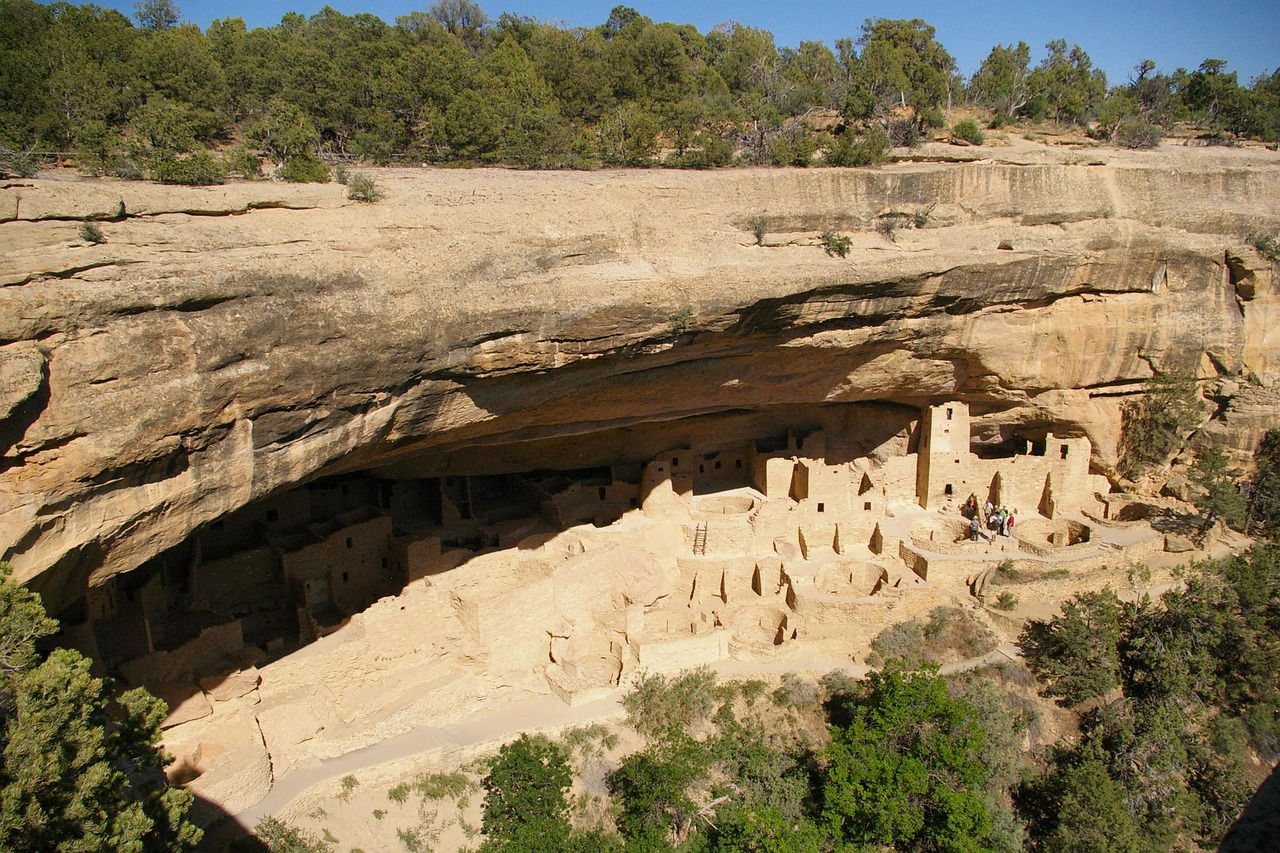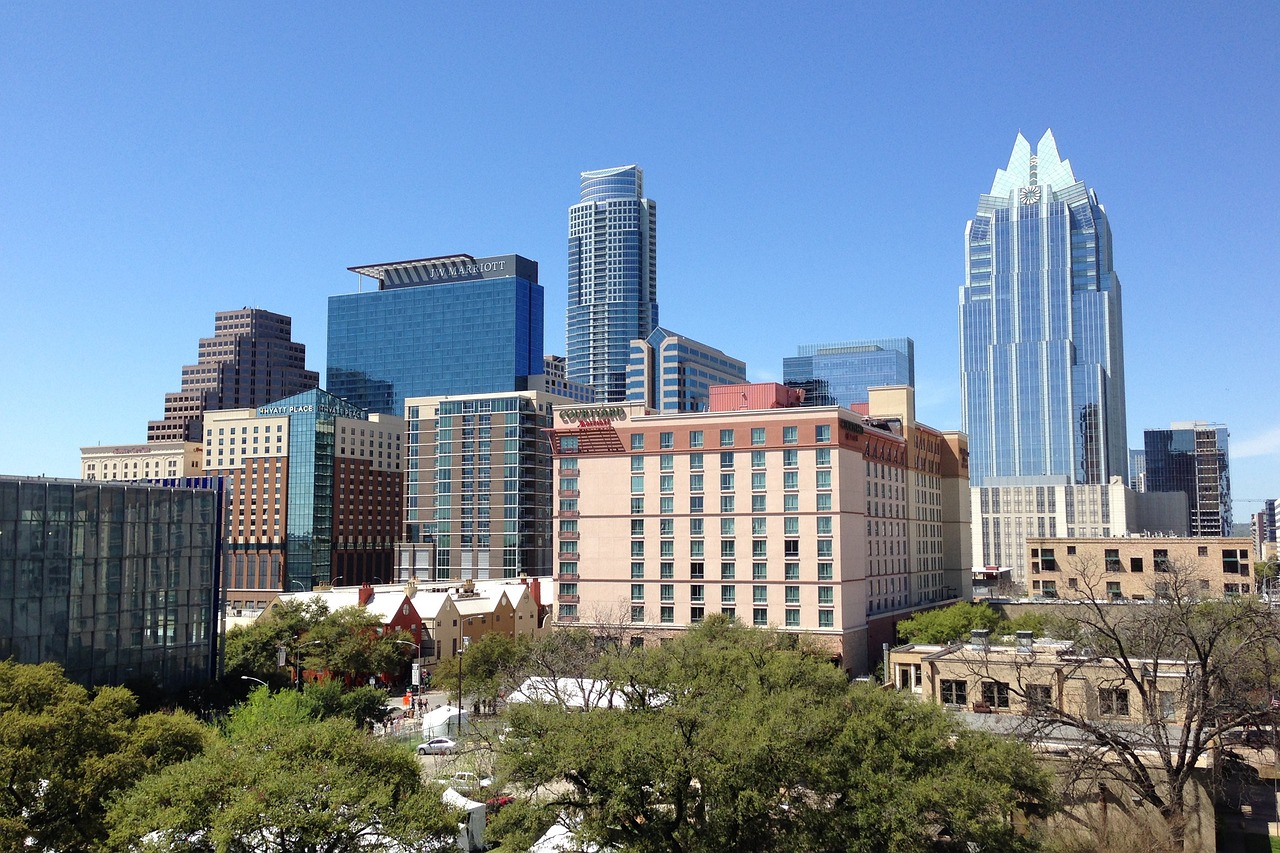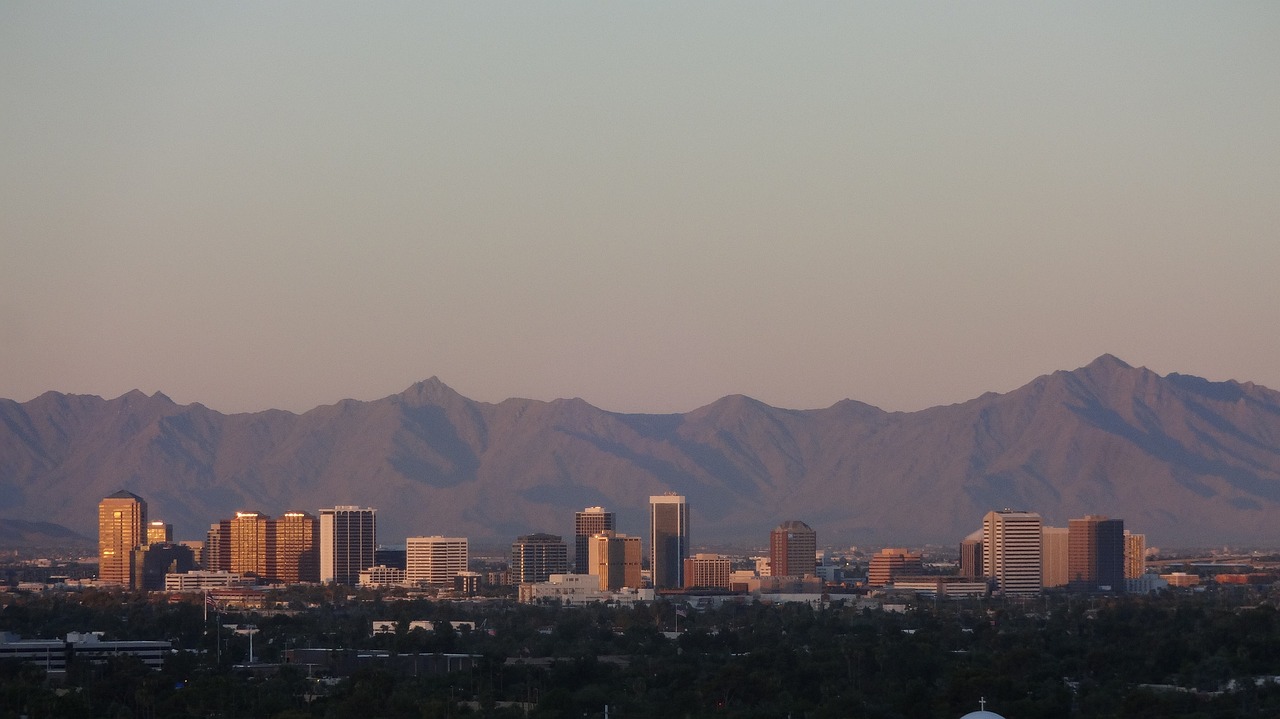Planning a vacation can be tricky. Mesa Verde National Park is a must-see, with its rich history and stunning views. This article will show you why it’s special, from ancient ruins to beautiful landscapes.
Keep reading for an adventure!
Key Takeaways
- Mesa Verde National Park is a place with rich history. It was first home to Paleo-Indians around 7500 BCE and later the Ancestral Puebloans until about 1300 AD.
- The park became a National Park in 1906 by President Theodore Roosevelt. It protects over 5,000 archaeological sites including cliff dwellings like Cliff Palace.
- Visitors can see ancient homes at places like Cliff Palace and Balcony House through guided tours. These tours teach about the people who lived there long ago.
- The park has unique nature too. It sits on the Colorado Plateau and has many plants and animals not found together anywhere else.
- Keeping Mesa Verde safe is tough work. Wildfires, climate change, and preserving sites are big challenges. The park works with local tribes to take care of this important place.
Historical Significance
Mesa Verde National Park has deep historical significance, dating back to the time of Paleo-Indians and later inhabited by the Ancestral Puebloans. The park’s history also includes its rediscovery and early excavations, leading to its establishment as a National Park.
Inhabitants: Paleo-Indians to Ancestral Puebloans
Long ago, the area now known as Mesa Verde National Park was home to Paleo-Indians. These first people arrived around 7500 BCE. They hunted and gathered across the mesa tops and canyons.
By 1 AD, a new culture emerged: the Ancestral Puebloans. These skilled farmers built intricate stone communities under overhanging cliffs.
The Ancestral Puebloans thrived here for centuries, creating homes, kivas (ceremonial rooms), and towers from the stone around them until about 1300 AD. Then, they left their cliff dwellings behind.
Many believe droughts forced them to seek new lands. Their departure set the stage for rediscovery and exploration in later years.
Rediscovery and Early Excavations
After the Ancestral Puebloans left, Mesa Verde stayed quiet for centuries. Then, in the late 1800s, cowboys and ranchers stumbled upon the cliff dwellings. A man named Richard Wetherill played a big part in making these sites known to others.
He worked with his brothers to explore and collect artifacts from these ancient homes.
The early work at Mesa Verde was not always careful or scientific. People took many items that belonged to the Ancestral Puebloans. This happened before laws protected such places.
In 1906, things started to change when President Theodore Roosevelt made Mesa Verde a National Park. This helped save the cliff dwellings and thousands of other archaeological sites from damage or theft.
Establishment as a National Park
The work of those early explorers set the stage for Mesa Verde to gain special status. In 1906, President Theodore Roosevelt signed a law that made Mesa Verde a National Park. This was big news because it was the first time the U.S. government protected an area just for its archaeological value.
The park covers about 52,485 acres in Southwest Colorado.
This move helped keep important Native American sites safe. Over 5,000 archaeological spots are in the park today, including cliff dwellings and mesa-top villages once home to the Ancestral Puebloans.
Visitors from all over come to see these wonders and learn about Native American history thanks to this decision back in 1906.
Key Archaeological Sites
Explore the ancient wonders of Mesa Verde National Park. Discover awe-inspiring cliff dwellings, such as Cliff Palace and Balcony House, that offer a captivating glimpse into the lives of the Ancestral Puebloans.
Cliff Palace
Cliff Palace is the largest cliff dwelling in North America and a highlight of Mesa Verde National Park. It was built by the Ancestral Puebloans around 1190 AD, and it housed approximately 100 people.
The structure consists of over 150 rooms and 23 kivas (round sunken rooms), showcasing the impressive architectural and engineering skills of its ancient inhabitants.
Visitors can explore Cliff Palace as part of ranger-guided tours, providing an up-close look at this well-preserved archaeological site. The experience offers insight into the daily lives, culture, and history of the Ancestral Puebloans who once called this place home.
This UNESCO World Heritage Site serves as a window to the past, allowing visitors to marvel at the ingenuity and resilience of these early Native American communities while also appreciating their cultural heritage.
Balcony House
Transitioning from the impressive Cliff Palace, visitors can explore another remarkable archaeological site at Mesa Verde National Park called Balcony House. This ancient dwelling is situated 8,000 feet above sea level and contains about 40 rooms and two kivas or underground ceremonial chambers.
The steepness of the climb to reach Balcony House gives tourists a sense of thrill and adventure as they navigate through original hand-and-toe-hold footholds.
Balcony House offers an immersive experience into the ingenuity and architecture of the Ancestral Puebloans who constructed this cliff dwelling over 700 years ago. Visitors can marvel at the stunning views of Soda Canyon while learning about how these ancient people ingeniously adapted to their environment.
It’s truly a fascinating glimpse into history and an opportunity for travelers to connect with Native American culture in a unique way within Mesa Verde National Park.
Long House
After exploring the fascinating history of Balcony House, visitors can continue their journey through Mesa Verde National Park with a visit to Long House. This ancient site is one of the largest cliff dwellings in the park and showcases the architectural prowess of the Ancestral Puebloans.
With over 150 rooms and 21 kivas, it provides a glimpse into the lives of these early inhabitants.
The structure is adorned with well-preserved petroglyphs and offers breathtaking views of the surrounding landscape from its lofty perch. Visitors can marvel at the impressive construction techniques used by the Ancestral Puebloans as they wander through this historical gem nestled within Southwestern Colorado’s rugged terrain.
Square Tower House
Square Tower House is one of the remarkable archaeological sites at Mesa Verde National Park, located in Southwestern Colorado. It was built by the Ancestral Puebloans around 1200 AD, and it’s a UNESCO World Heritage Site.
The structure’s most prominent feature is a square tower that rises five stories high, making it an impressive sight for visitors.
Visitors can explore the site through ranger-guided tours or by hiking on designated trails. This unique site offers a glimpse into the architectural and cultural achievements of the Ancestral Puebloans.
The Square Tower House provides valuable insights into Native American history and ancient ruins, making it an essential stop for anyone interested in exploring this rich cultural heritage in person.
Natural Features of the Park
Natural Features of the Park
Mesa Verde National Park’s natural features include its striking geology and diverse landscape, offering a unique experience for visitors. Its ecosystem hosts a variety of distinct flora and fauna, contributing to the park’s rich biodiversity.
Geology and Landscape
Mesa Verde National Park sits atop the Colorado Plateau in Southwestern Colorado. The park’s terrain is characterized by its unique geology, featuring deep canyons, steep cliffs, and expansive mesa tops.
This landscape provides a stunning backdrop for the well-preserved archaeological sites that offer a glimpse into the lives of the Ancestral Puebloans who thrived there over 700 years ago.
The region’s diverse geological formations also foster a rich variety of flora and fauna, adding to the natural allure of this UNESCO World Heritage Site.
The impressive sandstone cliffs not only sheltered the dwellings but also showcase ancient petroglyphs and rock art. Visitors will be enchanted by these breathtaking views, providing an extraordinary experience intertwined with history and nature alike.
Unique Flora and Fauna
After exploring the captivating geology and landscape of Mesa Verde National Park, visitors can encounter a remarkable array of unique flora and fauna. The park showcases diverse plant life such as pinyon pine and Utah juniper, offering a picturesque backdrop against the ancient cliff dwellings.
Wildlife enthusiasts might catch glimpses of mule deer, black bear, coyotes, and various bird species like hawks and golden eagles while traversing the park’s trails or admiring the archaeological sites.
The park’s ecosystem supports over 1000 plant species including wildflowers like larkspur and penstemon. Additionally, its wildlife habitat is home to about 74 mammal species ranging from tiny rodents to larger mammals like mountain lions.
Mesa Verde also provides refuge for around 200 avian species varying from songbirds to predatory raptors. With this rich ecological tapestry interwoven amidst its cultural heritage, Mesa Verde National Park offers an enriching experience for nature enthusiasts seeking both historical marvels and natural wonders.
Visitor Experiences
Explore ancient cliff dwellings on guided tours, hike through the rugged landscapes, and camp at Morefield Campground for an immersive experience of Mesa Verde National Park. Visitor experiences include in-depth explorations of archaeological wonders and outdoor adventures amidst unique flora and fauna.
Guided Tours of Cliff Dwellings
Mesa Verde National Park offers guided tours of its fascinating cliff dwellings, providing an immersive experience for visitors. Here’s what you can expect:
- Experienced guides lead you through well-preserved ancient structures.
- Gain insights into the lives and culture of the Ancestral Puebloans.
- Explore intricate architectural details and learn about the history of each dwelling.
- Witness breathtaking panoramic views from these historical sites.
- Engage in discussions about the preservation efforts and ongoing archaeological research.
This unique opportunity allows travelers to connect with the rich history and heritage of Mesa Verde National Park firsthand.
Hiking Trails
Mesa Verde National Park offers various hiking trails that allow visitors to explore the park’s unique landscape and archaeological sites. Here are some of the notable trails you can enjoy during your visit:
- Petroglyph Point Trail: This 2.4-mile round trip trail takes you through diverse ecosystems and provides a close-up view of ancient petroglyphs, showcasing the rich history of the region.
- Spruce Tree House Loop: This easy loop trail guides you to one of the best-preserved cliff dwellings in Mesa Verde, allowing you to immerse yourself in the fascinating architecture and history of Ancestral Puebloans.
- Soda Canyon Overlook Trail: A moderate 2.5-mile round trip hike offering panoramic views of Soda Canyon and its surrounding landscape, providing an excellent vantage point for capturing memorable photographs.
- Knife Edge Trail: For a more challenging experience, this 2.4-mile round trip trail leads visitors along a narrow rock spine with breathtaking views of Montezuma Valley, providing an exhilarating adventure for hikers.
Exploring these trails will give you an immersive experience of Mesa Verde’s natural beauty and historical significance, providing unforgettable memories of your visit to this UNESCO World Heritage Site.
Camping at Morefield Campground
After exploring the hiking trails, you can settle in at Morefield Campground. With over 250 sites, this campground offers a variety of experiences for visitors to Mesa Verde National Park.
The campground provides amenities such as hot showers, a café, and a village store for your convenience. You’ll be surrounded by juniper and piñon pine trees while staying close to the park’s attractions.
Morefield Campground is open from early May to mid-October, offering an opportunity to connect with nature within Mesa Verde National Park’s stunning landscape. The location’s proximity allows campers easy access to key archaeological sites and hiking trails, making it an ideal base for further exploration of the park’s wonders.
Preservation and Challenges
Preserving the ancient sites requires ongoing efforts due to environmental challenges. Collaboration with local tribes ensures that cultural heritage and natural resources are protected for future generations.
Wildfires and Environmental Concerns
Preserving Mesa Verde National Park also means safeguarding it from wildfires and other environmental threats. The park has faced significant challenges due to increasing wildfire risks in recent years.
For instance, the Long Mesa fire of 2002 burned over 22,000 acres within the park’s boundaries. These fires not only threaten the natural landscape but also put the archaeological sites and cliff dwellings at risk.
As a result, park management and local authorities have implemented stringent fire prevention measures to protect this cultural heritage site.
In addition to wildfires, Mesa Verde faces environmental concerns related to climate change and ecosystem preservation. The impact of changing weather patterns on vegetation, water resources, and wildlife habitats is carefully monitored and managed by the park authorities in collaboration with conservation organizations and local tribes who have deep-rooted connections to this land.
Balancing tourism with conservation efforts remains crucial for sustaining this unique place for future generations.
Collaboration with Local Tribes
After addressing the environmental challenges, it’s important to highlight the collaboration with local tribes. Mesa Verde National Park works closely with Native American tribes in the region for cultural preservation and site management.
The park collaborates with 24 affiliated tribes to ensure that ancestral sites and artifacts are respected and preserved, reflecting a deep respect for Native American history and culture in this region.
This partnership ensures that tribal members have a say in how their ancestors’ history is presented to visitors, enhancing the authenticity of the experience. This collaboration also extends to educational programs about Native American culture within the park, offering visitors an immersive understanding of the rich heritage of the area while supporting ongoing efforts by local tribes for cultural preservation and conservation.
Conclusion
In the end, Mesa Verde National Park offers a fascinating journey through ancient history. Visitors can explore cliff dwellings and ponder the daily lives of the Ancestral Puebloans.
The park’s preservation efforts ensure that this remarkable cultural heritage continues to inspire and educate for generations to come. So, if you’re seeking a memorable adventure infused with rich history and breathtaking scenery, Mesa Verde National Park is a must-visit destination.
FAQs
1. What is Mesa Verde National Park?
Mesa Verde National Park is a stunning area in Colorado, known for its ancient cliff dwellings and rich history. It protects the homes of the Ancestral Puebloans who lived there long ago.
2. How can I explore Mesa Verde National Park?
You can enjoy many activities at Mesa Verde, like hiking on trails, taking guided tours of the cliff dwellings, and visiting the park’s museum to learn more about its fascinating history.
3. When is the best time to visit Mesa Verde National Park?
The best time to visit is during spring or fall when temperatures are mild and crowds are smaller. Summer can be hot, but it also offers full access to all park features.
4. Are there any rules I should know before visiting?
Yes! It’s important to respect nature and wildlife while you’re there. Stay on marked paths, do not climb on ruins, and always pack out what you bring in so that everyone can enjoy this beautiful place safely.







Leave a Reply